Following SEO Best Practices can help you rank higher in Google search results and even AI overview snippets. When you are looking for some additional smart tips to improve your website’s overall ranking, you can implement SEO in its best form to gain traffic, leads, and conversions for your site.
There are many ways you can boost your website ranking. But following these SEO best practices can help you increase your site visits and plenty of other things without any risk of penalty hits or obstruction. Here, we will learn more about some of the best practices in SEO for beginners as well as professionals to boost their website visibility.
What Are SEO Best Practices?
SEO Best practices are a set of proven strategies or techniques that help websites rank higher on search engine result pages (SERPs), gain more organic traffic, organic leads, conversions, and improve user experience when interacting with websites.
These hacks are effective because they align with the search engine algorithms and user expectations. The best part is that they are a long-term approach to ensure your success. In 2025, SEO best practices also include Answer Engine Optimization (AEO), voice based optimization, and content needs to be optimized for both AI and humans.
SEO Best Practices: Key Takeaways
- SEO is a combined approach which depends on more than one element and techniques to boost the overall site ranking.
- You need to optimize your site with proper keywords, title tags, meta tags, snippets, and quality content in order to rank in search results.
- It is important to optimize your content for AEO to feature it in AI overviews, snippets, and other places.
10 SEO Best Practices To Rank Higher On Google
Following the best practices in your SEO can help you rank higher in search results and gain more organic traffic. Check some of the SEO Best practices below.
1. Use Primary Keyword Early In the Content
The location of keyword placement is important in your content. It must be properly distributed throughout the content. It is important to mention your main keyword at least once at the top of your content. But do you know the logic behind it?
Google, during crawling, places more weight on the terms that appear at the top of a webpage for ranking. For example, the primary keyword of my content, “Google Data Analytics Internship 2025” is Google Data Analytics Internship which you will find in the first line of the content.
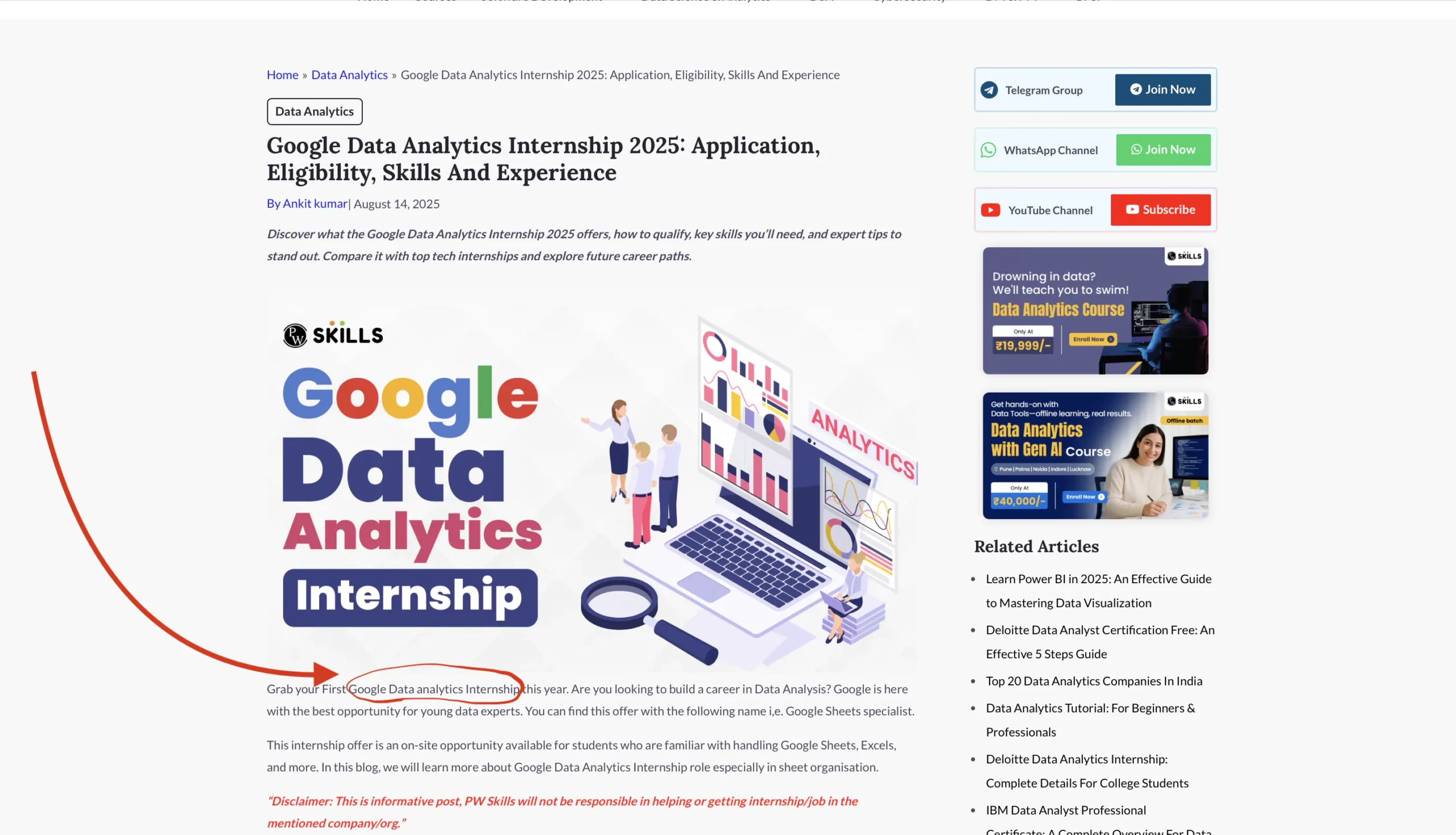
2. Structure Heading Tags Properly
Heading tags are present in the content to make it easier for search engines and users interacting with the content to understand the structure and distinction in the content. On WordPress, you can easily add Headings by highlighting the text and choosing the appropriate level of heading for your content.
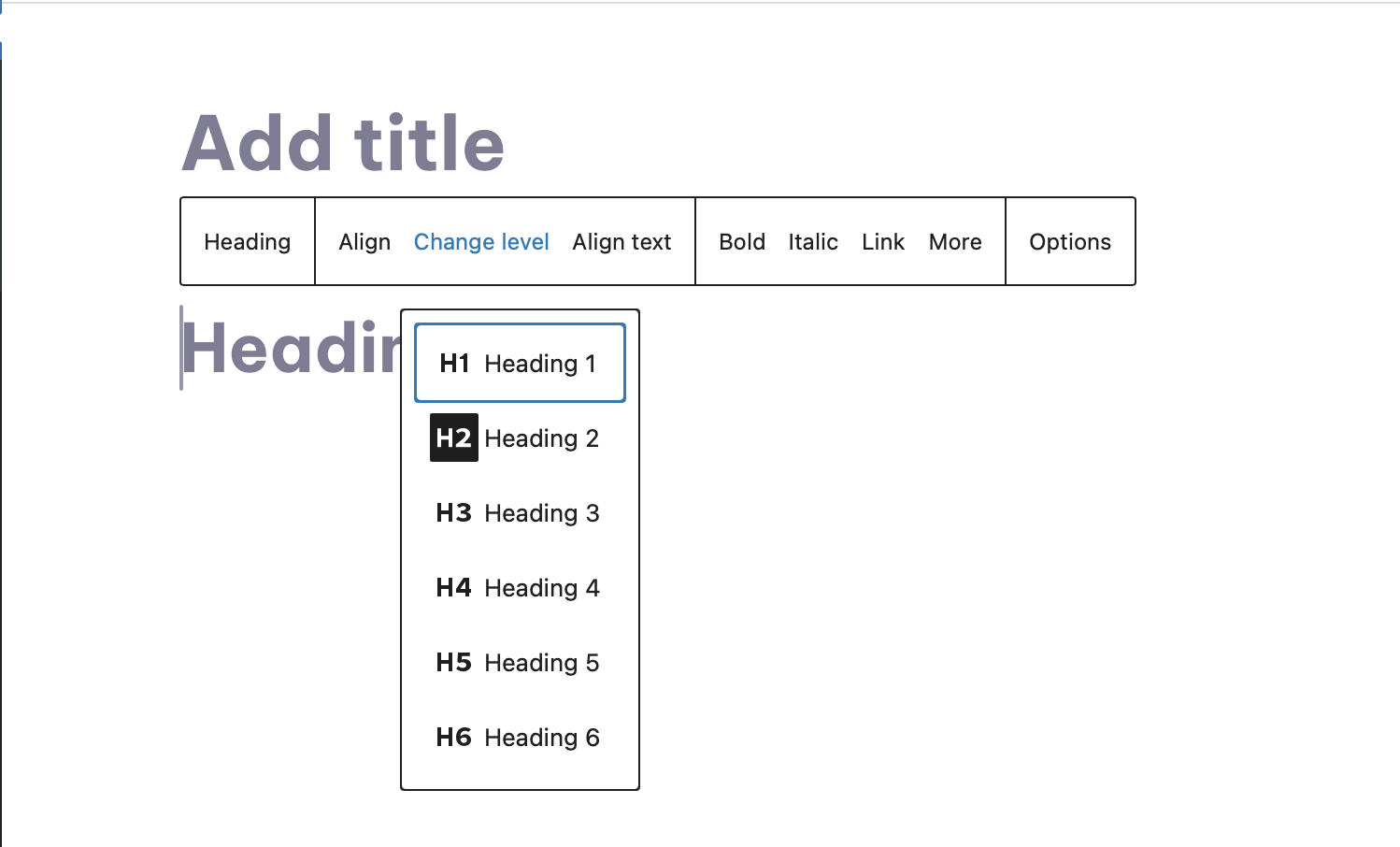
Every page needs to start with a <h1> tag used for allotting the main heading i.,e. On page title. For your body of content, you can distribute headings in increasing order. For subheadings inside the content, you can use <h2> tags. While for subheadings inside the subheadings (<h2>) tag, you can use <h3> tag for sub – subheading. You can also add <h4>, <h5>, and <h6> to add more depth in your content, but generally, content on Google contains up to <h3> tags.
3. Provide Unique Content On Your Site
It is very important to avoid duplicate content for effective SEO. It is one of the SEO best practices that you need to keep in the front of your mind. Duplicate or near-duplicate versions of content can harm your website’s SEO and might not give you the push you need on search engines.
All elements, including title tags, meta description tags, product tags, landing pages, image alt text, category pages, and more, must be unique. You can use the canonical tags for similar content together.
4. Write Unique Title Tag
Your title tag for each page on your site must be unique and easy to understand for the search engines to give you a rank easily. Also, your title tag must start with the keyword you want to rank for, as Google lays more emphasis on the first few words of your title to understand the intent of your content and then rank you accordingly.
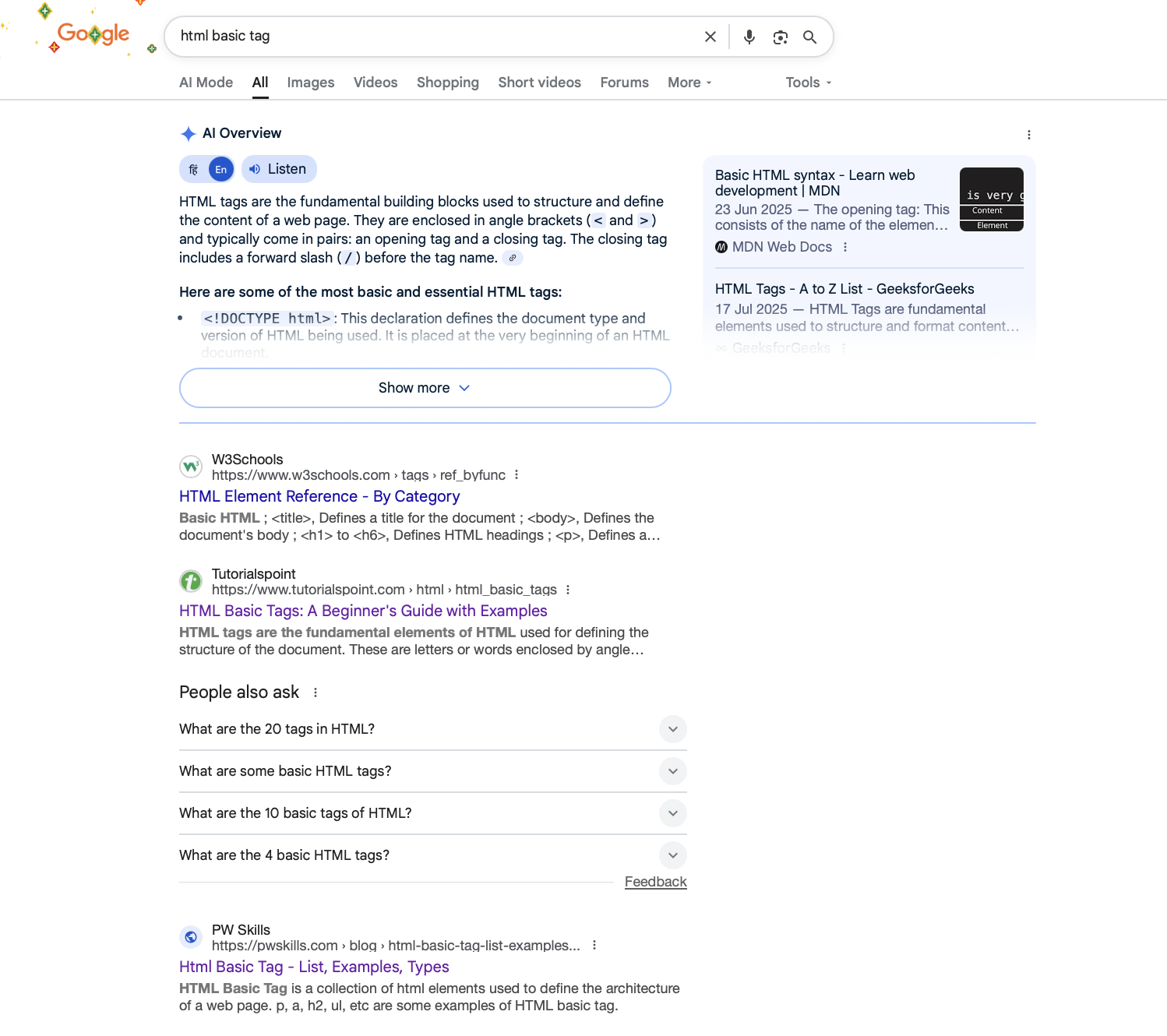
Suppose I want to rank for a competitive keyword “HTML Basic Tags”, hence I kept it in my title and distributed the main keyword throughout the content to get a good ranking on Google. Also, make sure you do not overstuff keywords in the title tag. Only use one keyword in the title for which you want to rank.

5. Include Interlinking Between Pages
You must include interlinking between different pages on your site. It is also considered an SEO best practice because it will help the search engine navigate your site and reach maximum content to interpret the structure of your site.

So, if you find an opportunity to link related pages, then you must consider doing it. In blog posts, you can recommend to your users a similar article or blog that they might find interesting.
![]() Join Our Digital Marketing WhatsApp Channel
Join Our Digital Marketing WhatsApp Channel
6. Build Backlinks For Authority
Backlinks are an important part of SEO best practice as they build the site’s authority and indicate to users that the content on your site is useful and can be interacted with. You can get backlinks from numerous websites, but the best backlinks generally come from reputable and trustworthy websites.
Hence, while making backlinks, make sure you prioritise good websites in your niche to get backlinks for your site. Make sure that you are familiar with the Google Spam policy, as you must keep it in mind while building backlinks to avoid your site from getting penalised.
7. Image Optimization Is Important
Image optimization is under one of the SEO best practices which makes your site faster and more accessible. It is recommended to convert your images to the next-gen format i,e. webP format to ensure faster loading time. Also, you must resize and compress your image file to reduce loading time.
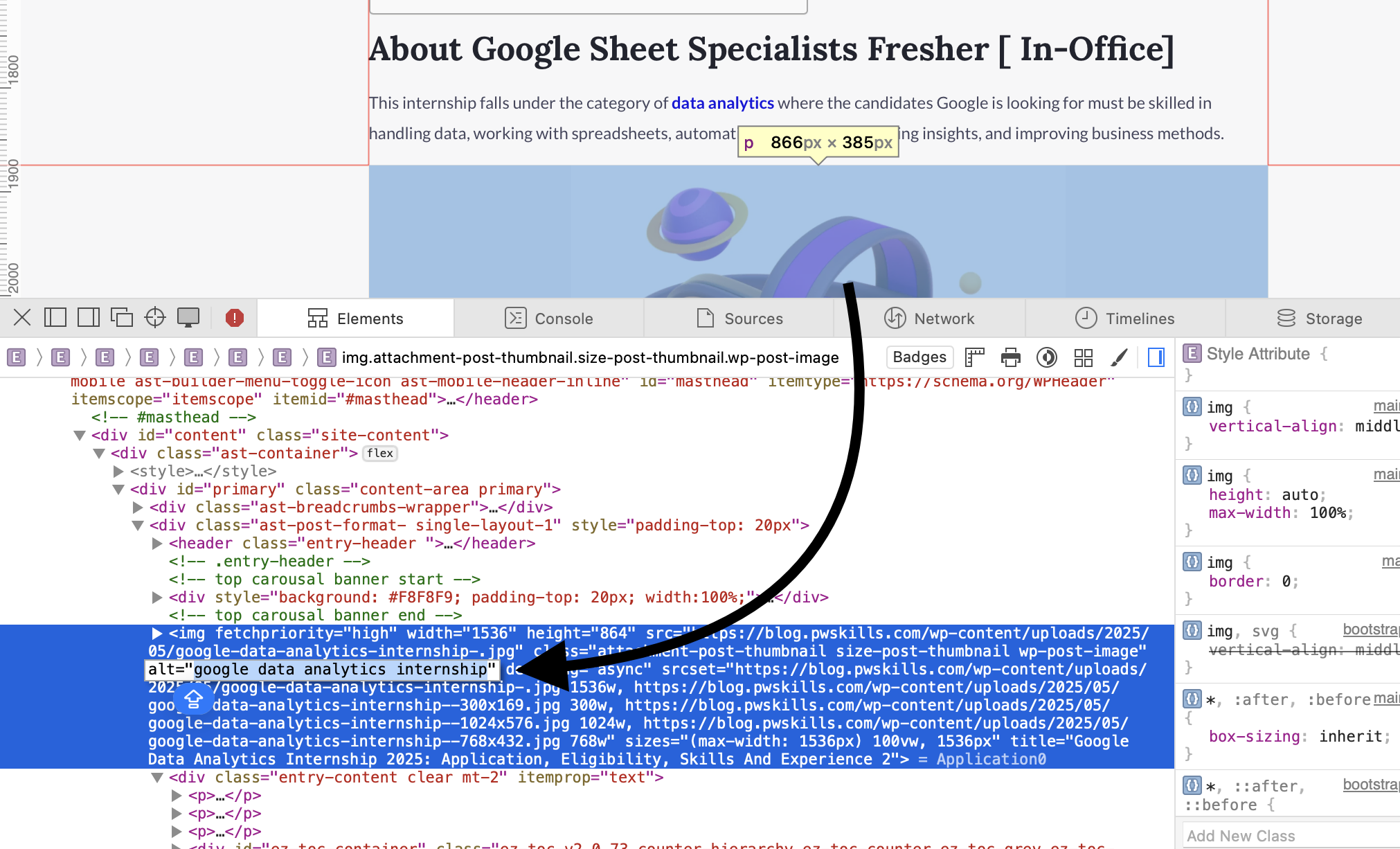
There are many online editing and compressing tools available which make it easy to minimise and compress the size of an image without affecting the quality of the image. Also, make sure you add “Alt text” to your image to help search engines understand what the image is about.
8. Publish Relevant & Helpful Content
It is no longer just about covering keywords to increase visibility on search engines. Now with AEO, GEO already in place, you need to optimize your content to make sure your content presents the intent relevant to the query made over Google. You have to make sure the piece of information you provide is unique, relevant, and accurate.
When your piece of content is useful and frequently being tagged in AI overviews and Google search engine result pages, then your site authority and usefulness might be increased.
- Make sure your content is covered around the topic you mentioned in the title and represents your brand niche.
- Cross-check the information you provide from an authoritative website or source.
- Optimize your content to cover the interests and needs of your target audience.
- Make more uses of your original idea, insights and other elements in your content to set you apart from your competitors.
9. Optimize Site Loading Speed
Site loading speed is one of the most probable ranking factors of Google and hence it is important to keep the loading time of our content on the web page in check. You must optimise your site speed especially for mobile devices.
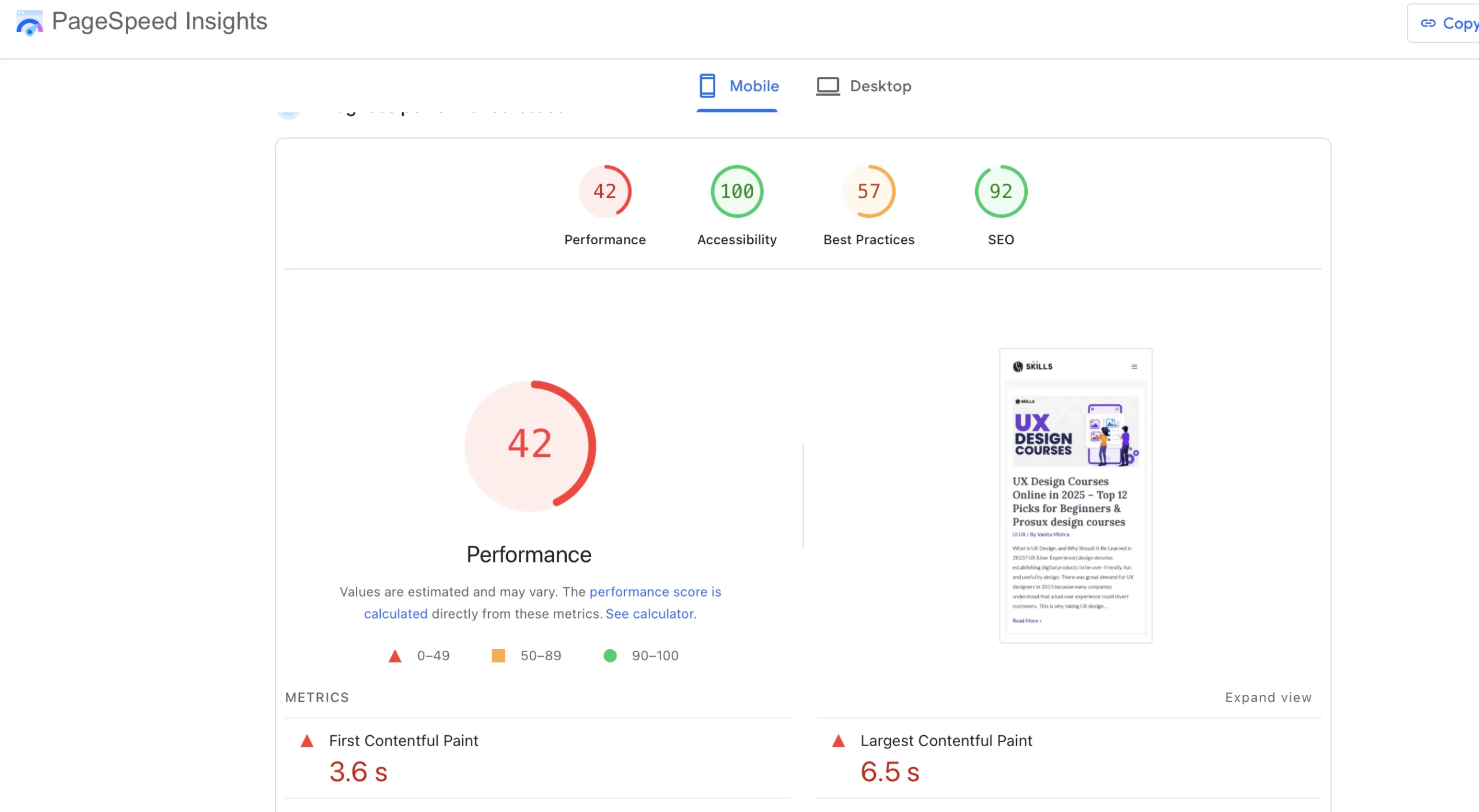
After you check your site recommendations on Page Speed Insights, which comes from Google. Make sure you implement these changes to improve your site speed. You can optimize and improve your site speed for both mobiles as well as desktop devices.
- Make sure you use compressed images in KB or WebP format
- Avoid using complex WordPress themes to prevent slowing down of your website.
- Lazy loading images can increase your site’s loading speed by 50% or more.
10. Keep Tracking with Google Search Console
It is important to keep your Google Search Console updated and monitor your content performance regularly. For SEO, you need to have Google Search Console like a live dashboard with many cool features and tools.
- Analyse your blog performance in the live dashboard of Google Search Console.
- You can check the number of clicks, impressions, Average CTR, and Average Position for each content or the overall site.
- You can find which pages of your site Google has indexed or can index.
You will also find “errors” and other flashy warnings that you can solve to index your page on Google. There are plenty more features you can check in Google Search Console and include in your SEO best practices.
Get a Complete Digital Marketing Course with PW Skills
Learn every expectation of digital marketing with the latest industry-oriented curriculum and the strength of Artificial Intelligence in the PW Skills Digital Marketing Course. Master advanced SEO tools, social media marketing, content strategy, and more to drive organic traffic, high conversions, and more.
If you are a student or a professional looking for an in-house career or freelance contract-based work in Search Engine Optimization, then this all-in-one course is all you need.
Looking for More?
- Get industry-led live sessions with professionals in digital marketing
- Build a fully job-optimised project portfolio which demonstrates your skills, and strengthen it with projects.
- Get opportunities for full-time jobs or freelance clients for different digital marketing tasks.
- Get personalised career assistance to prepare for interviews and land your dream job
- Get industry recognised certifications from PW Skills
- Enhance your job readiness with practical skills and expert career guidance.
SEO Best Practices FAQs
Q1. How do I increase my SEO ranking?
Ans: You can increase your SEO ranking by using efficient SEO practices, which include quality content, proper keywords, proper meta tags, headings, and more. Read the complete article above to learn in detail.
Q2. What are the four pillars of SEO?
Ans: The four pillars of SEO are on page SEO, Off page SEO, Technical SEO, and Content.
Q3. What are SEO backlinks?
Ans: SEO backlinks are a hyperlink that connects your website to another and helps to build trust factor and domain authority with inbound links to your site.
Q4. Is image optimization important for SEO?
Ans: Yes, it is important to optimize your image, which includes compressing, resizing, and using proper “Alt text” in the images to make them SEO friendly.

